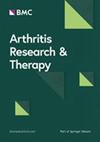Predicting rheumatoid arthritis progression from seronegative undifferentiated arthritis using machine learning: a deep learning model trained on the KURAMA cohort and externally validated with the ANSWER cohort
IF 4.9
2区 医学
Q1 Medicine
引用次数: 0
Abstract
Undifferentiated arthritis (UA) often develops into rheumatoid arthritis (RA), but predicting disease progression from seronegative UA remains challenging because seronegative RA often does not meet the classification criteria. This study aims to build a machine learning (ML) model to predict the progression from seronegative UA to RA using clinical and laboratory parameters. KURAMA cohort (training dataset) and ANSWER cohort (validation dataset) were utilized. Patients with seronegative UA were selected based on specific inclusion and exclusion criteria. Clinical and laboratory parameters, including demographic data, acute phase reactants, autoantibodies, and physical examination findings, were collected. Various ML models, including a Feedforward Neural Network (FNN), were developed and compared. Model performance was evaluated using the area under the receiver operating characteristic curve (AUC), sensitivity, and other metrics. SHapley Additive exPlanations (SHAP) values were computed to interpret the importance of variables. KURAMA cohort included 210 patients with seronegative UA, of whom 57 (27.1%) progressed to RA. The FNN model demonstrated the highest predictive performance with an AUC of 0.924 and a sensitivity of 80.7% in the training dataset. Validation with ANSWER cohort (140 patients; 32.1% progressed to RA) showed an AUC of 0.777, sensitivity of 77.8%. MMP-3 had the highest impact on the model. The FNN model exhibited robust performance in predicting the progression of RA from seronegative UA and maintained substantial sensitivity in an independent validation cohort. This model using only clinical and laboratory parameters has potential for predicting RA progression in patients with seronegative UA.使用机器学习预测血清阴性未分化关节炎的类风湿关节炎进展:在KURAMA队列上训练的深度学习模型,并通过ANSWER队列进行外部验证
未分化关节炎(UA)常常会发展成类风湿性关节炎(RA),但由于血清阴性 RA 通常不符合分类标准,因此预测血清阴性 UA 的疾病进展仍具有挑战性。本研究旨在建立一个机器学习(ML)模型,利用临床和实验室参数预测血清阴性 UA 向 RA 的进展。研究利用了 KURAMA 队列(训练数据集)和 ANSWER 队列(验证数据集)。根据特定的纳入和排除标准选择血清阴性 UA 患者。收集了临床和实验室参数,包括人口统计学数据、急性期反应物、自身抗体和体检结果。开发并比较了包括前馈神经网络(FNN)在内的各种 ML 模型。使用接收者工作特征曲线下面积(AUC)、灵敏度和其他指标对模型性能进行了评估。通过计算SHAPLEY Additive exPlanations(SHAP)值来解释变量的重要性。KURAMA队列包括210名血清阴性UA患者,其中57人(27.1%)进展为RA。在训练数据集中,FNN 模型的预测性能最高,AUC 为 0.924,灵敏度为 80.7%。用ANSWER队列(140名患者;32.1%进展为RA)进行的验证显示,AUC为0.777,灵敏度为77.8%。MMP-3 对模型的影响最大。FNN模型在预测血清阴性UA进展为RA方面表现出色,并在独立验证队列中保持了很高的灵敏度。该模型仅使用临床和实验室参数,具有预测血清阴性 UA 患者的 RA 进展的潜力。
本文章由计算机程序翻译,如有差异,请以英文原文为准。
求助全文
约1分钟内获得全文
求助全文
来源期刊

Arthritis Research & Therapy
RHEUMATOLOGY-
CiteScore
8.60
自引率
2.00%
发文量
261
审稿时长
14 weeks
期刊介绍:
Established in 1999, Arthritis Research and Therapy is an international, open access, peer-reviewed journal, publishing original articles in the area of musculoskeletal research and therapy as well as, reviews, commentaries and reports. A major focus of the journal is on the immunologic processes leading to inflammation, damage and repair as they relate to autoimmune rheumatic and musculoskeletal conditions, and which inform the translation of this knowledge into advances in clinical care. Original basic, translational and clinical research is considered for publication along with results of early and late phase therapeutic trials, especially as they pertain to the underpinning science that informs clinical observations in interventional studies.
 求助内容:
求助内容: 应助结果提醒方式:
应助结果提醒方式:


